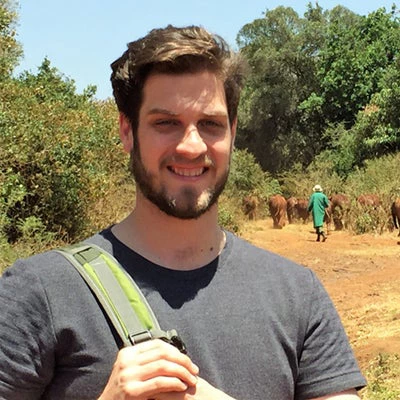Imagine you are a public official in Uganda, dreaming of a way to bring electricity to your country on a grand scale. You know its benefits for sustainable development and how it can jump start other projects. But where do you start?
Enter the Global Electrification Platform (GEP). Synthesizing data from 46 countries in one smart model, you could experiment with a mix of technologies and variables required for universal electricity access by 2030. The GEP maps publicly available geospatial data from countries with electricity access below 90% to show what steps countries can take to reach Sustainable Development Goal (SDG) 7: “ensuring access to affordable, reliable, sustainable, and modern energy for all.” With nearly ten years left to make this vision a reality, GEP puts the power of energy data in users’ hands to take the first steps towards least-cost electrification.
 So how does it work? Let’s look back to our friend in Uganda. Working with partners from the World Bank, the private sector, and experts in her country, she can launch the GEP to view customized variables and begin laying the groundwork for a least-cost electrification strategy. The model currently generates outcomes from 6 different levers: rate of population growth, target levels of electricity demand, how the investment plan will be capped through 2025, the cost of generating electricity across the grid and the PV system, and the costs of the rollout plan. Sitting down to determine how to provide universal electricity access by 2030, our official can project medium population growth at 3.1% with a low top-down demand target, an ideal and uncapped investment plan, realistic on-grid costs of a little more than one cent per kWh, and the least-cost approach for rollout to generate 308 MW of added capacity across the country, with a price tag of $5.1 billion USD.
So how does it work? Let’s look back to our friend in Uganda. Working with partners from the World Bank, the private sector, and experts in her country, she can launch the GEP to view customized variables and begin laying the groundwork for a least-cost electrification strategy. The model currently generates outcomes from 6 different levers: rate of population growth, target levels of electricity demand, how the investment plan will be capped through 2025, the cost of generating electricity across the grid and the PV system, and the costs of the rollout plan. Sitting down to determine how to provide universal electricity access by 2030, our official can project medium population growth at 3.1% with a low top-down demand target, an ideal and uncapped investment plan, realistic on-grid costs of a little more than one cent per kWh, and the least-cost approach for rollout to generate 308 MW of added capacity across the country, with a price tag of $5.1 billion USD.
But what happens if Uganda is extra ambitious and sets a high top-down demand target? That increases the tiers of energy delivered to 1.5 GW of added capacity, but also costs about five times more (pictured bottom left). What if the target stays the same as the initial $5 billion scenario, but the population grows faster than expected? In this case, 327 MW of capacity is required, and the cost increases minimally to $5.3 billion (pictured bottom right).
 |
 |
Now our official has three different scenarios, but the possibilities are nearly endless. At present, 6 factors are included on the platform, though 150 comprise the underlying model. In the future, GEP will house more sophisticated machine learning techniques to enable country officials and development partners expanded access to the data crucial to making informed decisions. For now, the program demonstrates real-time changes to demand and existing infrastructure that will secure the most cost-effective path to electrification. In doing so, GEP allows users to visualize potential scenarios, initiating a forum for discussion and planning while opening up this rich data as a global public good.
The data featured on the GEP is useful for more than just electrification. Since the information can be pinpointed down to the settlement layer, it is rich with statistics on access to roads, schools, distance to major cities, and many other essential services. It can even offer guidance on demand, highlighting the geographic heterogeneity of rural areas—no two communities are the same in their needs or their access. From turning on a lightbulb to increasing countries’ resilience to pandemics by finding out where more clinics need to be built, GEP can be a vital first step in ending poverty and boosting shared prosperity across the board.
Moreover, GEP also hosts a toolbox with the code necessary to run customized GEP models, to analyze the GEP results, and to contribute directly to the GEP platform. These tools allow for greater customization of the model, expanded access beyond the 60 countries currently hosted or in the pipeline, and positions the GEP as a springboard for further research and development. Eventually, GEP also hopes to support the uploading of successful plans back into the system to refine its machine learning techniques and the extent of information made available to new users.
At its core, the Global Electrification Platform operates on two basic principles: that data is central to informed strategies and opportunities for the world’s poorest, and that very same data is only powerful when it is used. The GEP will not only assist in breaking down key barriers to electrification, but also encouraging the transparent, accessible use of data science for evidence-based decision-making and policy design. As an open-source tool, the GEP can contribute to developing global standards in energy modelling and support client countries in taking ownership of their unique results. With continued capacity building and mentorship from the GEP team via annual trainings each June, the platform can further foster a community dedicated to making SDG 7 a reality, equipped with the right skills and data to succeed.
To learn more, visit the Global Electrification Platform or contact DECDG’s geospatial team at gost@worldbank.org.




Join the Conversation